Have you seen on the menu that Turkish coffee is available, but you need to know what it is? Perhaps you’re standing right before a coffee shop counter and got curious? Or you’re passionate about Turkish coffee and decided to try making it home. Whatever the truth, I’m here to help: how it is made, what tools you need, and what’s my secret recipe.
The traditional Turkish coffee
Turkish coffee is not a coffee type. It is a ritual. Turkish coffee (in Turkish: “türk kahvesi”) is a traditional method in which we prepare and consume our drink without filtration. You’ll need a few things to make it, but luckily, getting them isn’t particularly difficult. First, look for a unique pot called “cezve” or “ibrik,” which is used for the preparation.
Since Turkish brewing has a ceremonial aspect, acquiring all the items in the set is worth acquiring. This includes a copper tray and porcelain cups placed in copper holders to protect our hands from the heat.
At flea markets, you’re likely to find complete sets. In grocery stores, it’s almost certain that you will find finely ground coffee suitable for your drink. If you plan to use specialty coffee, it’s worth getting a scale and a manual or electric grinder for your household or seeking assistance from a barista at your favorite coffee shop.
Traditional Turkish coffee is made and served with sugar. Several countries consider this preparation method their own, and accordingly, they prepare it slightly differently. Finding the technique and flavor profile that best suits your taste is worth experimenting with at home.
Cezve, the Turkish Coffee Maker
An essential element of a Turkish coffee set is the “cezve,” a beautiful and distinctive coffee maker. A traditional cezve (or in Turkish: “ibrik”) is handcrafted, with a tin-coated interior and a copper exterior.
What’s in a Turkish coffee set?
The set contains the cezve and beautiful ceramic cups. That’s all!
The set is ornate, typically made of copper or porcelain, often hand-painted and adorned with vibrant colors. Consuming from these makes your coffee truly authentic!
The Turkish coffee powder
You will need a fine grind of coffee. And when I say “fine grind,” I mean it. Turkish coffee powder is ground to a fine consistency, like the finest flour. This texture is a key player in achieving the distinctive characteristics of Turkish coffee. The finer the grind, the more surface area for extraction when hot water meets the coffee. This results in a highly concentrated and bold flavor profile in your cup.
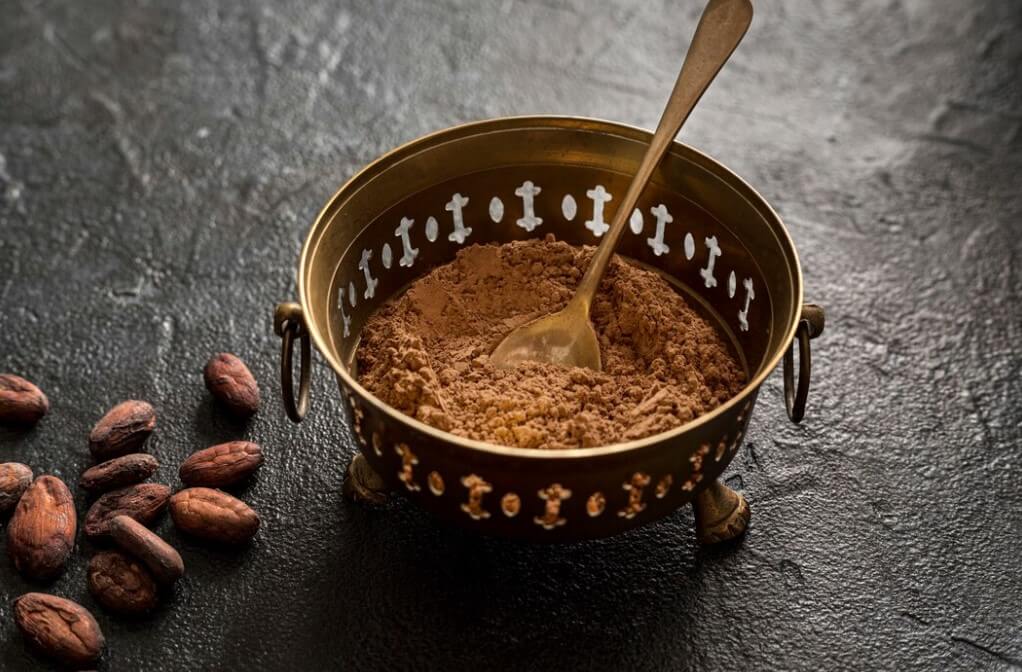
Amount of caffeine in Turkish coffee
In terms of caffeine content, Turkish coffee is relatively high. A coffee typically served in tiny demitasse cups contains roughly 40-60 milligrams of caffeine.
Is Turkish coffee strong?
It is known for its strength in terms of flavor and caffeine content.
Benefits of Turkish coffee
As I wrote earlier: it’s just a ritual, not a completely different material. Turkish coffee is from the same coffee, so it has the benefits a coffee can offer.
- Its antioxidants support overall health,
- it boosts your mental alertness,
- helps you with digesting,
- protects the liver,
- and reduces the risk of diabetes.
How to make Turkish coffee?
Well, there are two recipes. One is traditional, with sugar. The other one is the secret recipe without sugar. There are several ways to prepare Turkish coffee, depending on whether you prefer the traditional or the modern version.
If you prefer the authentic, traditional Turkish coffee, you will need a very fine, powdery grind.
Traditional Recipe
First, place finely ground coffee and a small spoonful of sugar into the cezve, onto which you pour water. Yes, in this case, coffee and sugar are boiled together!
The water must reach up to the “neck” of the cezve, leaving room for heating. In the traditional method, it’s brewed three times, which means when the coffee starts rising, foaming, you take it off the heat for a moment before it overflows.
Repeat this process two more times. Finally, gently pour the coffee into the cup, ensuring most grounds stay in the cezve.
This recipe yields the classic taste of Turkish coffee.
Turks use different names for coffee prepared this way, depending on the amount of added sugar. In Turkish: “şekerli,” “orta şekerli,” or “çok şekerli” refer to Turkish coffee made with a little, medium, or a lot of sugar (usually one, two, or three cubes of sugar).
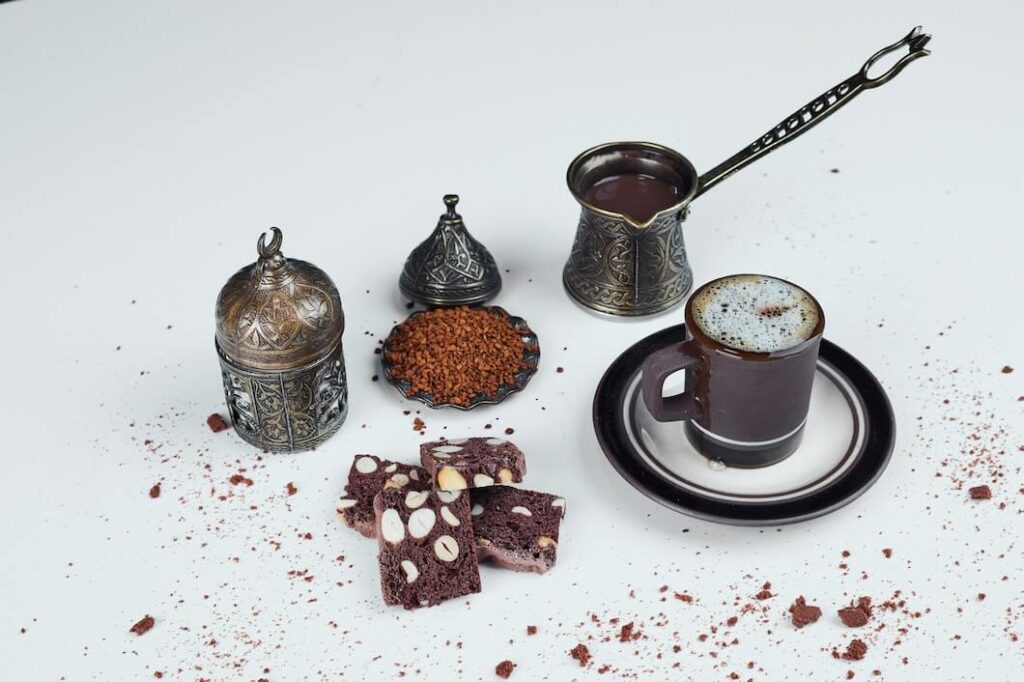
Recipe without sugar
If you enjoy specialty coffee and find this preparation method exciting, you will need grounds coarser than powder but finer than those used for a French press.
Here, it’s advisable to use a scale and brew the coffee in a 1:10 or 1:8 ratio, depending on your taste. In this case, the sugar stays on the shelf, as we want to savor the flavors of the coffee fully.
Heat filtered water to at least 60 degrees Celsius (140 degrees Fahrenheit) to avoid reheating from a too-low temperature. This is important for the same reason as the pour-over method – we don’t want to scorch the coffee.
Place the warmed water on the stovetop, add the grounds, then gently stir.
Select a flame intensity that ensures a controlled extraction without being too rapid. When the coffee starts to rise, turn off the flame and set the cezve aside for 2-3 minutes. This allows the grounds to settle at the bottom of the cezve.
Next, pour it into a cup and savor the delicious flavors the origin and processing methods imparted.
If you’re concerned about sediment but enjoy the body of the coffee, you can strain the prepared drink through an AeroPress. However, authentic Turkish coffee is best enjoyed as it is, as its authenticity lies in its preparation.

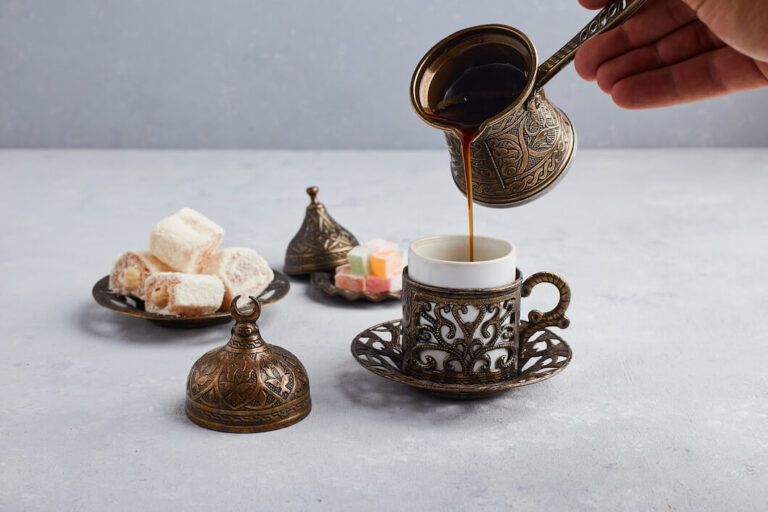
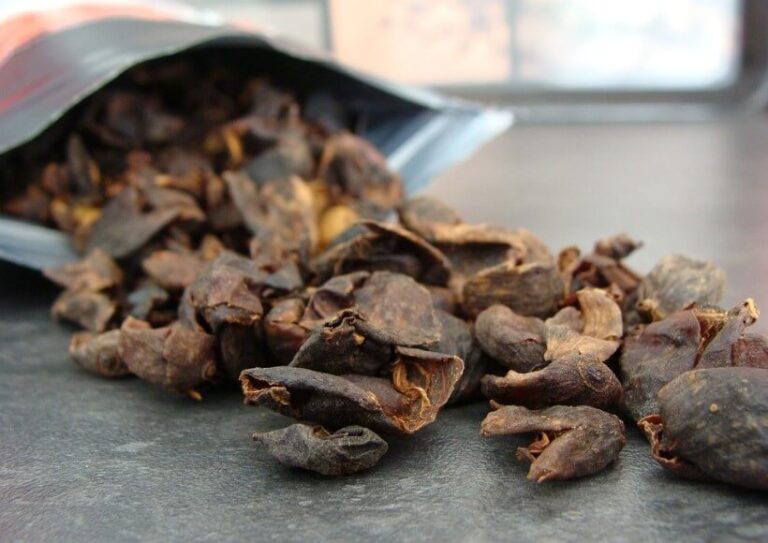
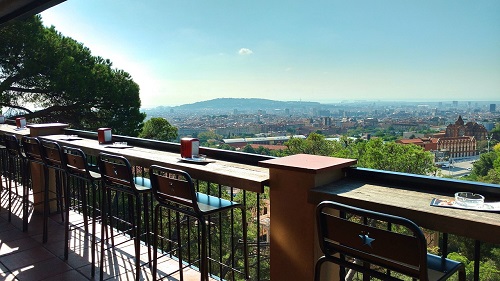
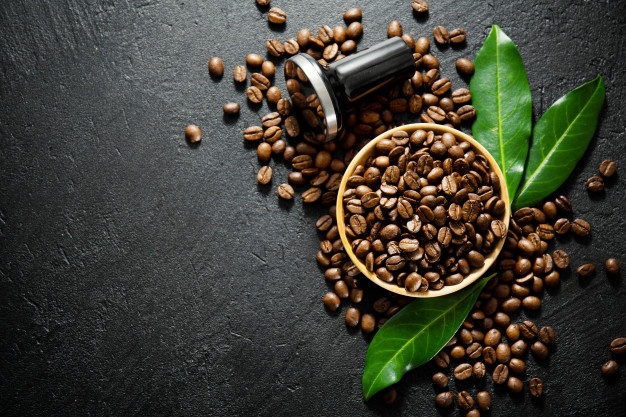
Leave a Reply